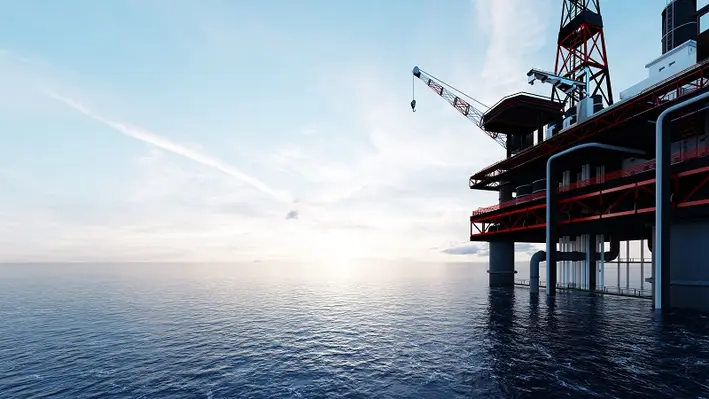
 In a five-year joint framework agreement with Talos Energy Inc, Helix Energy Solutions Group, Inc gets the first right of refusal regarding specific annual work scopes for Talos’s decommissioning requirements in the US Gulf of Mexico.
In a five-year joint framework agreement with Talos Energy Inc, Helix Energy Solutions Group, Inc gets the first right of refusal regarding specific annual work scopes for Talos’s decommissioning requirements in the US Gulf of Mexico.
Scheduled to start in the second quarter of the year, the agreement outlines a base pricing structure and processes for determining and scheduling specific projects Talos requires.
The projected scopes of work include Talos’s normal course abandonment of offshore wells, pipelines and platforms, primarily on the shelf. Helix’s Louisiana-based shallow water abandonment group, Helix Alliance, plans to utilise derrick barges for structure removals, liftboats for plug and abandonment activities, and dive support vessels (DSVs) for pipeline abandonments, plus multiple offshore supply vessels (OSVs), among other assets in the course of the campaign.
Owen Kratz, Helix’s President and Chief Executive Officer, said, “We are excited to have been awarded this significant framework agreement for well and structure removal and decommissioning. Helix and Talos have worked together on field production, well intervention and decommissioning in the deepwater arena for many years, and this framework expands the relationship onto the shelf, further demonstrating Helix’s position as the preeminent company for full-field decommissioning in the Gulf of Mexico.”
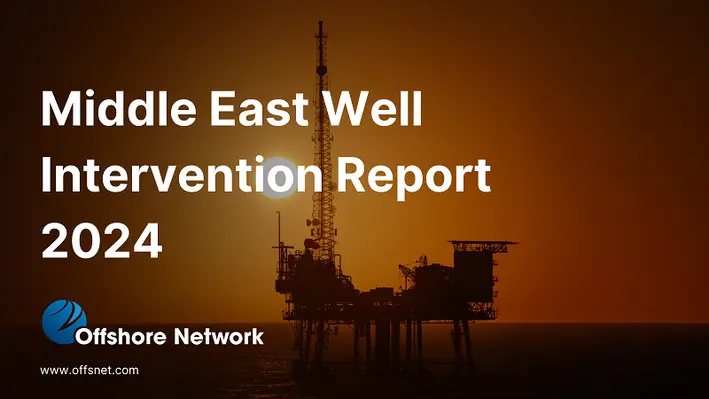

As the oil and gas industry is increasingly seeking sustainability, well intervention remains an obvious choice.
According to Jenny Feng, Supply Chain Analyst, Rystad Energy, operators will look to "ramp up production from existing fields, and well interventions will be a vital piece of the puzzle. As a quick, efficient, and cost-effective method of maximising existing resources, interventions are going to be a hot topic in the years to come." As per the research body’s prediction last year, spending on interventions stands close to nearly US$58bn. With sustainability the focal point, this amount sets the bar for a surge in the coming years as the number of wells ready for intervention is projected to reach 17% by 2027, equating to a total 260,000 wells globally.
Middle East and North Africa's (MENA) eagerness to take up intervention activities is well evident as companies such as Coretrax is showing increased interest in the fossil fuel-driven region. “The Middle East is a key growth area for Coretrax... As operators remain focused on maximising recovery efficiently and sustainably, our expandable technology is ideally placed to support this demand," said John Fraser, Coretrax CEO, while marking the company’s first deployment of ReLineWL straddles in 2022 for a major Saudi operator.
In another multi-year contract in the Middle East signed as recently as October 2023, the well integrity and production optimisation leaser will be delivering production enhancement across a multi-well campaign. It will also be supplying expandable tubulars to support brownfield optimisation. With advanced tools such as ReLineMNS and ReLineHYD expandable casing patches under the brand name, the company will effectively help isolate trouble zones and stimulate production on the operator’s existing wells.
Companies from the region are leveraging artificial intelligence and machine learning (AI and ML), and coming up with groundbreaking digital innovations in the intervention space. AIQ's autonomous well control solution called RoboWell that has been deployed by ADNOC in its North East Bab (NEB) assets remains one such instance. Expro, which is an active player in the MENA region, has come up with a tool called Galea, which is a completely automated well intervention system that can perform a variety of slickline operations, offering easy alternative to conventional methods.
The Middle East and North Africa Well Intervention Outlook attempts to reflect on these industry developments, as OWI MENA 2024 gears up to return in Abu Dhabi from 17-18 September.
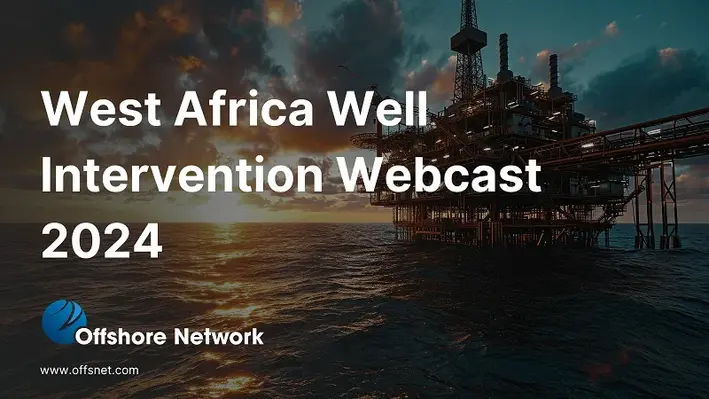
 The Offshore Well Intervention West Africa Webcast from Offshore Network shines the spotlight on a market with significant potential and unpicks the challenges holding it back.
The Offshore Well Intervention West Africa Webcast from Offshore Network shines the spotlight on a market with significant potential and unpicks the challenges holding it back.
Moderator Robert Daniels, Editor at Offshore Network, was joined by an expert panel of guests who joined the discussion from a myriad of locations across the region. This list of panellists willing to share their knowledge and experience included Obasi Isdore Chigozie, Well Intervention Specialist at Sterling Oil Exploration & Energy Production Co. Ltd; Albert Amewolah, Subsea Operations Engineering at Tullow Oil; and Isioma Agbadiba, Subsea Production Supervisor at Eni Nigeria.
At a time when the global oil and gas industry is grappling with the energy transition, the need to maintain production targets has remained imperative – despite COP28 calling for an eventual transition away from fossil fuels – in line with growing power demand. In West Africa, companies are now looking to do their part for the environment while also contending with the wider issues around electrification and the role fossil fuels will continue to play in the economic development of its nations.
It is against this backdrop that the panellists spoke on the role of offshore well intervention within this evolving environment – a method often depicted as the answer to enhancing production rates without incurring the sustainability hit of drilling new wells. Additionally, the market and its servers are receiving heightened attention due to the growing need for plug and abandonment activities as the world’s (and region’s) offshore wellstock increases in average age with every passing year.
Together, the industry experts explored such topics and answered where West Africa fits into this global trend? What are the factors unique to the region and that are shaping its future? And what must be done for more well intervention campaigns to be conducted there?
Click here to discover the full, free-to-view webcast.
And for any questions surrounding the topics covered or the upcoming OWI WA conference (running from 28-29 May in Lagos, Nigeria), reach out to:
Jack Heffernan - Project Manager
e:
t: +44 (0)20 3038 6926
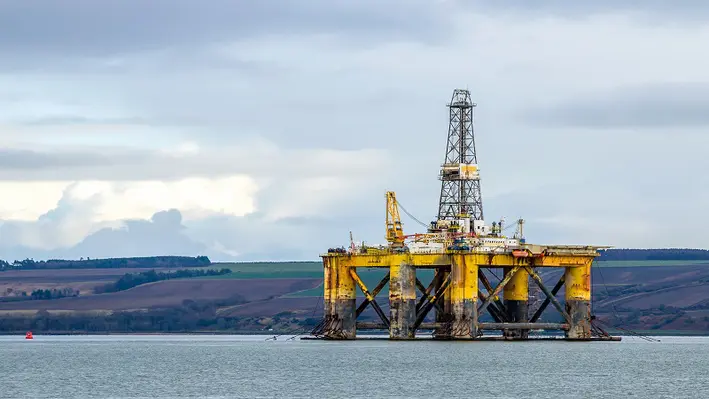
 Sapura Energy and Norway-based AF Offshore Decom launched their joint decommissioning venture called Kitar Solutions at OTC Asia 2024.
Sapura Energy and Norway-based AF Offshore Decom launched their joint decommissioning venture called Kitar Solutions at OTC Asia 2024.
Sapura's strategic assets and AF Offshore Decom's extensive North Sea decommissioning expertise have resulted in Kitar Solutions, which will undertake decommissioning projects with a customised approach, while prioritising risk mitigation and sustainability.
Sapura Energy defines Kitar as a comprehensive suite of engineering, preparations, removal and disposal (EPRD) services that streamlines the decommissioning process, and reflects the company's dedication to advancing decommissioning techniques and promoting effective waste management and recycling.
Kitar Solutions boasts of unique capabilities from facility isolation and cleaning, removal and disposal of topsides, jackets and subsea structures, to engineering and verification surveys. It has dedicated zones for both ship disposal and offshore structure disposal, where installations can be dismantled, recycled and repurposed.
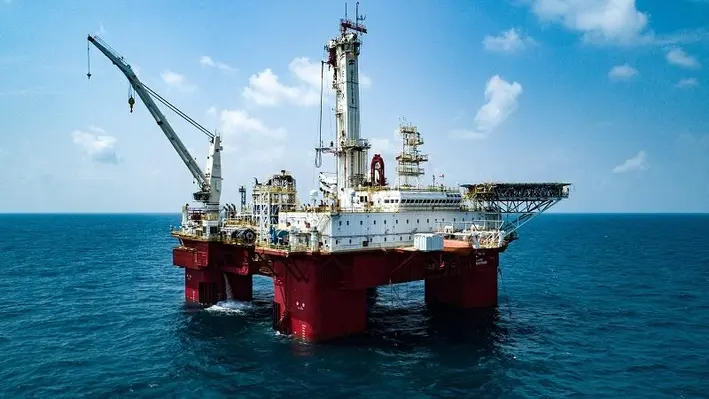
 Helix Energy Solutions Group has been awarded a deepwater well intervention contract by Esso Exploration and Production Nigeria (Esso).
Helix Energy Solutions Group has been awarded a deepwater well intervention contract by Esso Exploration and Production Nigeria (Esso).
The contract is for work offshore Nigeria in the Erha and Usan fields wherein Helix will provide its Q4000 well intervention vessel to cover fully integrated well intervention services from production enhancement to plug and abandonment.
Scotty Sparks, Helix’s Executive Vice President and Chief Operating Officer, commented, “We are pleased to announce this contract for the Q4000. We are eager to strengthen our relationship with Esso and to further establish our presence as the leader for well intervention services in West Africa.”
The project is expected to commence in September 2024, with the vessel expected to stay in Nigeria until 2025.
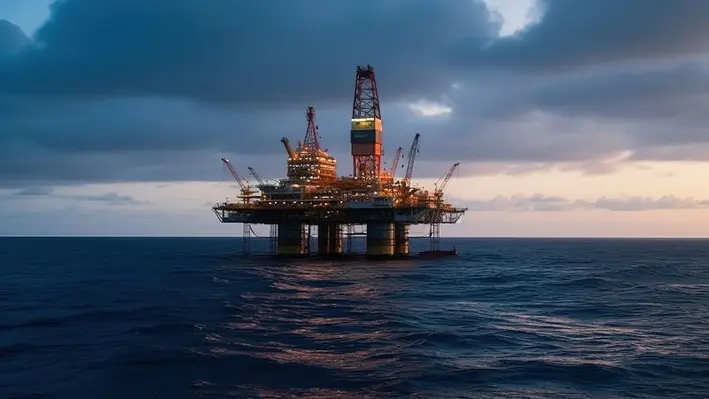
 Plexus Holdings PLC, an AIM-quoted oil and gas engineering services business, and owner of the proprietary POS-GRIP friction-grip method of wellhead engineering, has won a contract valued in excess of £1mn to provide specialised equipment and services for multiple plug and abandonment (P&A) activities in the North Sea.
Plexus Holdings PLC, an AIM-quoted oil and gas engineering services business, and owner of the proprietary POS-GRIP friction-grip method of wellhead engineering, has won a contract valued in excess of £1mn to provide specialised equipment and services for multiple plug and abandonment (P&A) activities in the North Sea.
Under the terms of the contract, Plexus will provide Exact adjustable surface wellhead equipment, and specialised centric mudline system tooling and services for P&A operations on wells in the Dutch sector of the North Sea. Operations are planned to commence in Q2 2024 for a period of nine months. Exact adjustable wellheads and centric mudline systems are part of the Plexus licence/collaboration agreement with SLB.
Commenting on the contract, Plexus' CEO Ben Van Bilderbeek said, "The number of wells that must be permanently plugged and abandoned is fast growing, particularly in mature offshore locations such as the North Sea, where the OEUK indicated that decommissioning would account for 25% of oil and gas expenditure in 2023, up from 12% in 2022, and encouragingly I believe this trend will continue. We are therefore delighted that Plexus' reputation is strengthening within this sector, and that our range of customers is broadening. Furthermore, this contract demonstrates the progress we are making in getting back into the adjustable wellhead and mudline equipment market as an established expert in this field and 'go-to' company for this type of equipment and service."
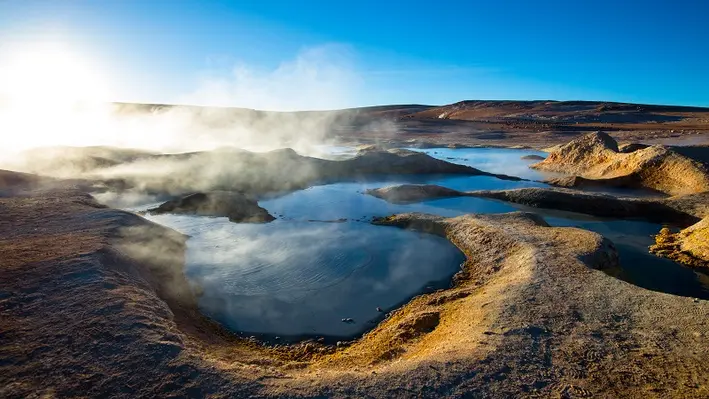
 The Federal Government of Austria, through the Climate and Energy Fund (Klima und Energiefonds), has announced a new funding programme worth EUR10mn to support deep geothermal projects.
The Federal Government of Austria, through the Climate and Energy Fund (Klima und Energiefonds), has announced a new funding programme worth EUR10mn to support deep geothermal projects.
The ‘Deep Geothermal Energy’ programme will support feasibility and preliminary studies, exploration and investigation measures, pilot drillings and the preparation of projects for the economic use of deep geothermal energy.
The aim of the funding programme is to create the basis for the implementation of efficient and environmentally-friendly deep geothermal projects. The Climate and Energy Fund will support companies and public institutions in five modules:
• Module One – Basic preliminary studies
• Module Two – Feasibility studies
• Module Three – Exploration
• Module Four – Pilot drilling
• Module Five – Citizen participation and information events
Climate and Energy Fund Managing Director, Bernd Vogl, said, “Our new programme helps to develop and implement projects for deep geothermal energy in heating networks and in industrial processes.
“The entire spectrum extends from planning to exploration to pilot drilling. This is intended, among other things, to reduce the risks associated with geothermal drilling. We are excited about the projects that will emerge from this initiative.”
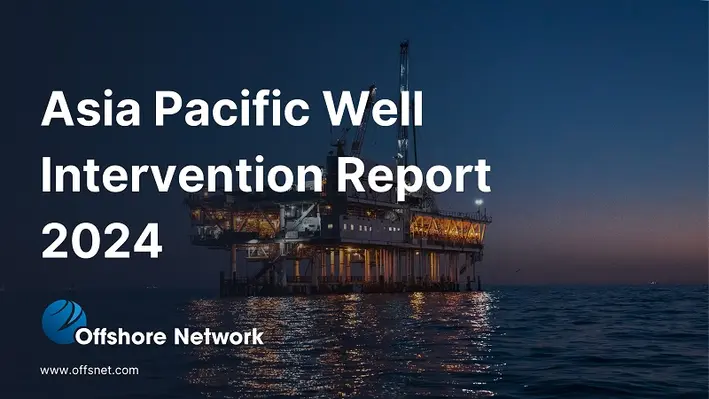

Offshore Network has released a free-to-download report outlining the developing prospects for the Asia Pacific’s offshore well intervention industry.
The wider energy sector is facing daunting challenges in the shape of increasing electricity consumption and the ever-increasing demand to limit environmental impact. While the rise of cleaner energy sources such as renewables appear unstoppable, there does, however, remain a place at the table for oil and gas, with fossil fuels set to continue to be an important component of the energy mix for the decades ahead. This trend is particularly pronounced in Asia, which is set to dominate global oil demand growth in 2024 and beyond.
While drilling has traditionally provided the answer to meeting growing demand, rising costs, uncertainty of success and environmental concerns are turning heads away from this activity and towards the potential of well intervention. The emergence of this is also being encouraged by the need for plugging and abandonment, a concern ever-growing in urgency as the region’s well stock continues to age. With market conditions opportune for well intervention to take centre stage, there remain some key challenges that must be overcome before it can fully step into the spotlight and fulfil its potential.
Offshore Network’s latest outlook assesses these key challenges such as collaboration and operator-service provider disharmony while examining the vast opportunities the region is offering.
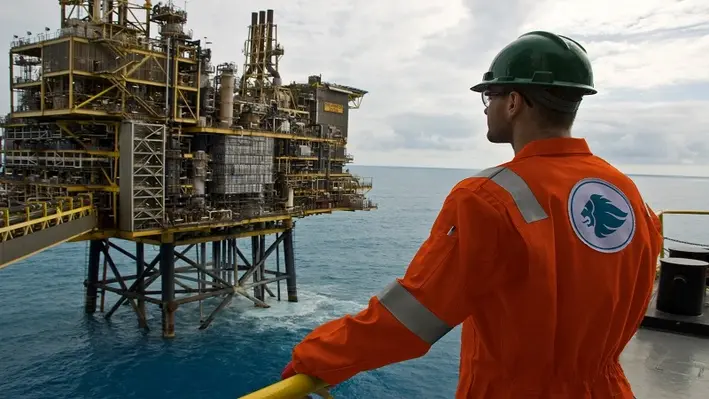
Energy services provider Expro has announced it has entered into a definitive agreement to acquire Coretrax, a technology leader in well integrity and production optimisation solutions, from an investment group led by Buckthorn Partners.
The acquisition of Coretrax will enable Expro to expand its portfolio of cost-effective, technology-enabled well construction and well integrity solutions, particularly across the North and Latin American, Europe and sub-Saharan Africa, and the Middle East and North Africa. Building on Coretrax’s successful 15-year history, the acquisition will accelerate the availability of the company’s innovative tools by leveraging Expro’s global operating footprint.
Michael Jordan, Chief Executive Officer, said, “We are thrilled to announce our proposed acquisition of Coretrax and look forward to welcoming John Fraser and his teammates to the Expro family.
“Coretrax has a complementary offering to Expro with little overlap and will bolster the portfolio of technology-enabled services and solutions offered through our Well Construction and Well Intervention & Integrity product lines, adding significant value to our clients from innovative technologies that reduce risk and cost, optimise drilling efficiency, extend the life of existing well stock, and optimise production.”
John Fraser, CEO at Coretrax, commented, “The synergies between our respective technology portfolios will enable us to grow our market share while significantly increasing our capabilities to tackle the most complex well challenges. We are proud of the innovation-led approach, strong customer base and performance history that we developed over the last 15 years, and we look forward to joining forces with Expro to create greater value for our customers globally.”
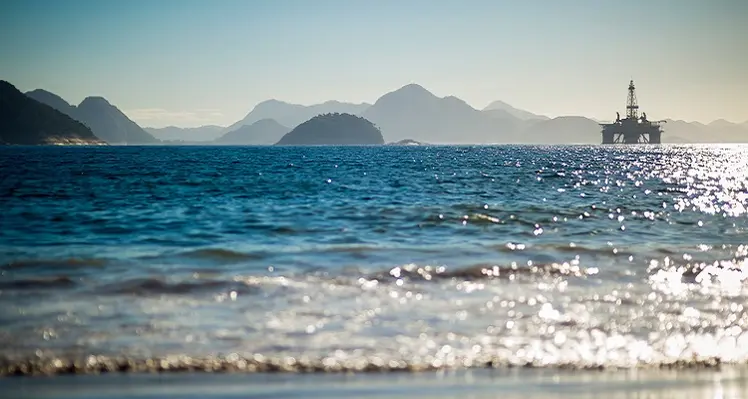

Helix Energy Solutions has announced the extension of its decommissioning contract with Trident Energy do Brasil Ltda.
The contract extension is for an additional 12 months and in direct continuation of the current contract. The extension is expected to begin in the fourth quarter of 2024 at rates in line with the improved well intervention market. The original contract commenced late 2022 offshore Brazil in the Campos Basin and utilises the Siem Helix 1 riser-based well intervention vessel and a 10K Intervention Riser System. Helix is providing fully integrated plug and abandonment well services through its Subsea Services Alliance partner SLB as well as project management and engineering services.
Helix and Siem Offshore have signed six-year charter extensions for both the Siem Helix vessels, with the Siem Helix 1 term extending through December 2030 and the Siem Helix 2 term extending through December 2031. The Siem Helix vessels are purpose-built advanced well intervention vessels capable of performing a wide range of subsea services including production enhancement, well decommissioning, subsea installation, offshore crane and Remotely Operated Vehicle (ROV) operations, offshore construction and emergency response.
The Helix Producer I (HPI) contract has also been extended by one year, to 1 June 2025. Since 2016, the HPI, a ship-shaped dynamically positioned (DP2) floating production unit, has been located at Green Canyon Block 237 producing oil and gas through the existing Phoenix Field subsea infrastructure. The vessel is designed to produce hydrocarbons and export to shore via pipeline or tanker.
Scotty Sparks, Helix’s Executive Vice President and Chief Operating Officer, stated, “We are pleased to announce that Helix has successfully executed these contract extensions, reflective of improving market conditions and increased demand for Helix’s assets and services.”
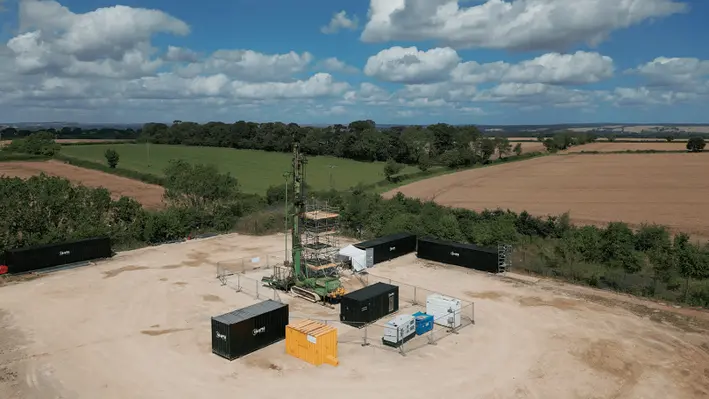
 UK-based, closed-loop geothermal energy developer, CeraPhi Energy, has acquired the business of Third Energy Limited, a former shale gas development company with plans to repurpose the existing wells into clean geothermal energy centres.
UK-based, closed-loop geothermal energy developer, CeraPhi Energy, has acquired the business of Third Energy Limited, a former shale gas development company with plans to repurpose the existing wells into clean geothermal energy centres.
The acquisition includes the subsidiaries, namely Third Energy Trading Limited, Wolfland Renewables Limited, Wolfland Utilities Limited, Third Energy UK Gas Limited, and the 50% holding in West Heslerton Renewables Limited.
The assets located in North Yorkshire, UK, include eight well sites consisting of 12 former gas wells in a suspended state, 22.4 km of 6-inch and 16.6 km of 3-inch subterranean pipelines and a further 22.4 km of buried fibre optic comms lines.
CeraPhi completed a commercial demonstration of its CeraPhiWell system earlier in the summer using the Third Energy KMA site. CeraPhi’s strategy is to de-risk the scaling and commercialisation of large-scale heat networks using boreholes down to a depth of 2km, reducing the space required for deployment of large-scale systems and increasing the extraction of thermal energy available for network connections. By both drilling new wells and repurposing end-of-life and non-producing oil and gas wells, the CeraPhi solution will provide 'huge commercial potential' for the scaling of geothermal heat networks in the UK and globally.
CeraPhi Energy CEO Karl Farrow said, “The decarbonisation of heat represents a huge UK and global challenge in meeting our net zero targets. Combined with the continued insecurity customers face with volatility and seasonal cost of fossil fuels, we have to move geothermal energy to scale to reduce the cost of deploying direct use heat, which is an endless resource not subject to price fluctuation, enabling a move away from our dependency on fossil fuels within our day to day energy mix.
"By using the inexhaustible resource beneath our feet using closed-loop technology we can access this energy anywhere with zero environmental risk, requiring no hydraulic fracturing, no use of water and providing enough energy within the next 15 years to solve our energy crisis indefinitely."
Third Energy Managing Director Russell Hoare said, “At Third Energy we’ve been pursuing a transition strategy for several years now with geothermal energy at the centre of that strategy and in CeraPhi we have found a capable and accomplished partner, as proven by the successful geothermal demonstrator project at our KMA site this summer. Bringing together the expertise of CeraPhi with the assets of Third Energy is a natural progression and I look forward to working with Karl and his team to continue the story.”
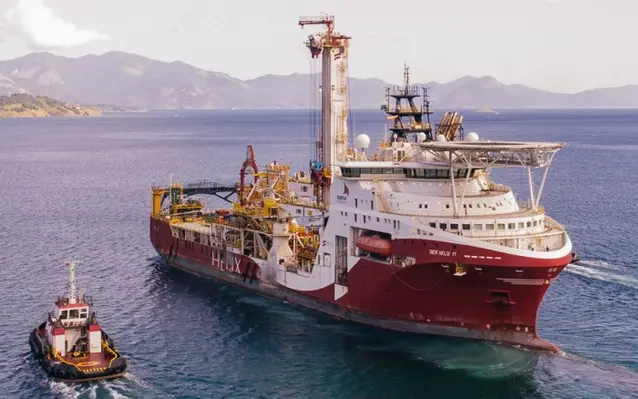
Siem Offshore has secured long-term contracts with Helix Energy Solutions for two of its Siem Helix well intervention vessels.
The two contracts for Siem Helix 1 and Siem Helix 2, valued at US$682mn, will come into effect from 1 January, 2025, and 1 January, 2026, respectively and will replace existing agreements to ensure firm utilisation for these vessels until at least 2030.
Each vessel will have a duration period of six years, with an optional extension period of up to five years, the contracts provide a solid foundation for future endeavors and growth for Siem Offshore. Siem Helix vessels have played a crucial role in the well intervention segment, and the longstanding partnership between Siem and Helix is a testament to the success both companies have endured.
Page 52 of 111